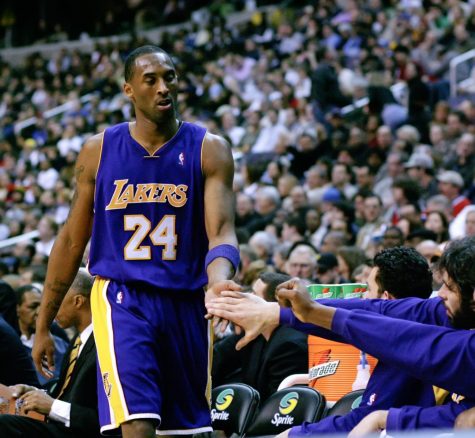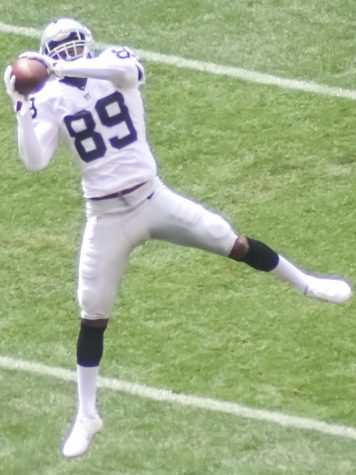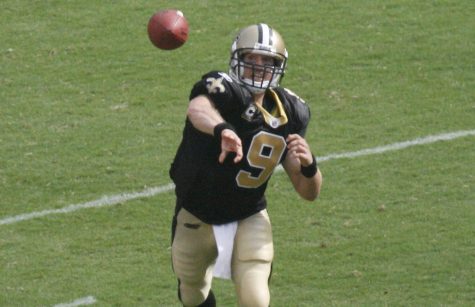Headgear debate leads to split decision for boxing
March 9, 2016
Protective gear is supposed to prevent injury to an athlete, but what happens when protective gear is prohibited from a sport?
According to the International Boxing Association (AIBA), wearing headgear actually has negative effects on male boxers.
Male boxers aren’t going to wear protective headgear at this summer’s Olympics in Rio de Janeiro after the International Olympic Committee (IOC) ratified the rule change made by the AIBA.
The AIBA made the rule change three years ago for male boxers. Female fighters aren’t affected by the rule change and will continue to wear headgear at the Olympics due to a lack of head injury research for women boxers.
A BBC article from March 1 reported that AIBA President Ching-Kuo Wu predicted the rule change will result in a decrease in concussions.
“AIBA provided medical and technical data that showed the number of concussions is lower without headgear,” IOC spokesman Mark Adams told BBC. “They have done a lot of research in the last three years. The rule will go ahead for Rio.”
Adams seems to be right. In a Fightland blog on VICE, author Josh Rosenblatt said:
“In the AIBA study, Charles Butler, the chairman of the association’s medical commission, studied 15,000 boxers, half of whom had competed with headgear and half of whom had competed without. He found that in the 7,352 rounds that took place with boxers wearing headgear, the rate of concussion was 0.38 per cent, compared with 0.17 per cent in the 7,545 rounds without headgear. The study found that headgear’s protective padding can cause extra jarring to fighters’ heads, give them a false sense of security, and make it more difficult to see punches coming, all of which can lead to brain damage.”
While the removal of headgear seems to be improving fighters’ safety, it really isn’t.
Concussions may be less likely to occur based on AIBA’s research, but Olympic fighters now face the increasing danger of receiving cuts to the face. Cuts can be caused by a number of things, but the main reason in professional boxing is fighters’ heads banging together in the ring.
Unlike professional fighters, Olympic boxers don’t have the luxury of taking off months to heal before their next fight. In Olympic boxing, fighters usually have to fight the following day or risk being disqualified.
The Associated Press reported that seven fighters developed significant cuts during the first three days of the U.S. Olympic trials in Reno, NV. Three boxers were cut so severe that they were forced out of the tournament.
“I’ve already seen four cuts in one day, and then you ask them to get stitched up and go fight tomorrow,” Terence Crawford, World Boxing Organization 140-pound champion who was at the tournament, told AP.
Cuts can be difficult for trainers to treat in between rounds and can even lead to disqualification. Not only that, but the risk of infection becomes more evident when dealing with cuts.
What’s worse is that Olympic boxers don’t even get paid to compete.
“I don’t like it, and I don’t think it’s necessary,” veteran trainer Virgil Hunter told AP. “Because what does it really say about the sport? You’re subjecting a kid to trauma for nothing. It’s one thing to get cut, and you get a million-dollar check when you get out of there. It’s another thing to get cut, and you get a trophy or a handshake.”
“If they’re going to make us fight without headgear, there should be some kind of payment,” Olympic prospect Chris Ousley said. “They’re making us take drug tests, do all this other stuff, and we’re basically fighting for charity. We’re volunteering. I can’t stay in amateur boxing.”
The Associated Press reported that Ousley lost his bout against Carlos Monroe, who was cut down to the skull and couldn’t continue, but still won on the scorecards. Another fighter, Mark Dawson, needed 18 stitches in his forehead to “seal a grotesque cut.”
It makes some sense why the IOC ratified the headgear rule change, but it’s ultimately doing more harm than good.
The Associated Press said the AIBA is encouraging fighters to use cut-reducing face creams, and they have started an initiative called HeadsUp! that encourages fighters to decrease unintentional head-butts.
Although concussions are for the most part worse than cuts, excessive cuts inflicted without ample recovery time can be just as bad, if not more detrimental to a fighter’s career. The IOC and AIBA need to seriously rethink their rules and regulations for Olympic fighters in order to save the already (and unfortunately) dying sport and help maintain its place in the Olympic Games.
email: [email protected]
Twitter: @KatPoster













